Spotlight on Nasif Imtiaz
Mar 29, 2016
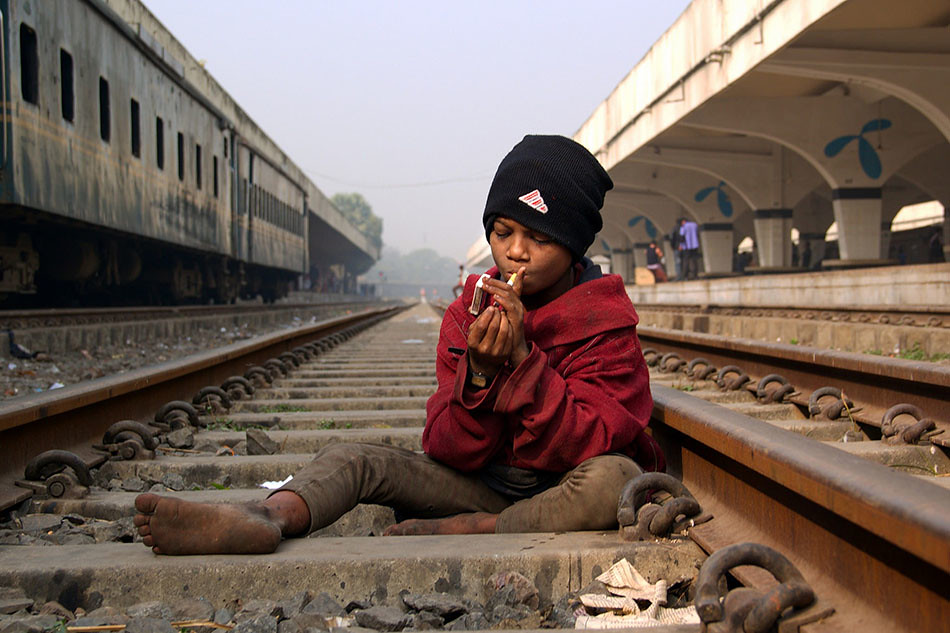
EDITOR'S NOTE:
Parts of the interview has been edited from original content for language purposes.
TID:
Thansk for being open to this, can you please tell us some of the backstory of the image?
NASIF:
When he was smoking on the railway track, I captured some photos of him. When he saw me he was still smoking. I asked him his name many times but didn't tell me his name. He just told his age and he was only 9-years-old. Then I told him about bad side of smoking. I don't think what I mentioned worked, though.
TID:
This project involves a lot of planning and working to gain access. Can you talk about the beginning (how you researched and prepared)?
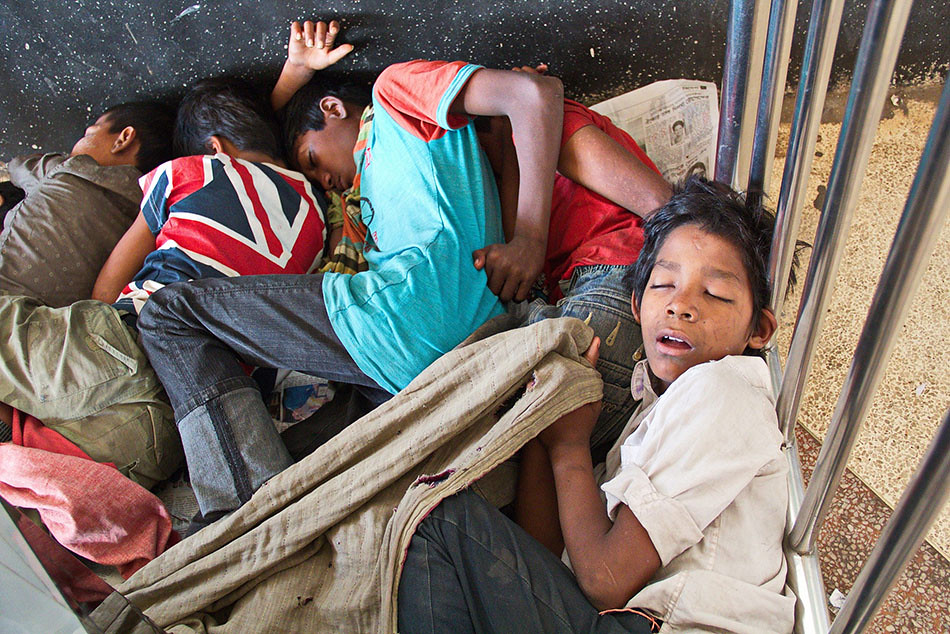
NASIF:
Before I thought about this project, the first thing that came into my mind was the sorrows of these street children in Kamalapur; about their lives because they have no one to look after them. I decided that I would make a photo story about them, in hopes of catching the attention of some people - at least who may be able to help them in whatever way possible. Although, there are some private institutions who facilitate for them, it is not enough for the vast number of street children that exist.
Taking photographs here is very difficult, because there are many types of people present; some are addicted to drugs and steal valuables such as mobiles and other expensive things from people to arrange money to buy drugs. They can become very violent when they cannot arrange money to buy drugs. So I had to dig around for information about them from the locals before I began my project. After finding out appropriate information about them, I understood that I have to take the risks that come with this project.
I started to think how I could make this project less risky, and so I came up with a plan that I will try to blend in with them, and then approach them with a friendly attitude so that they allow me to take photographs with them. I made them feel comfortable by explaining to them that it is not their fault that they are in this situation, rather it was poverty that forced them to take these measures, and I was only documenting them because I want to expose to the world their untold stories.
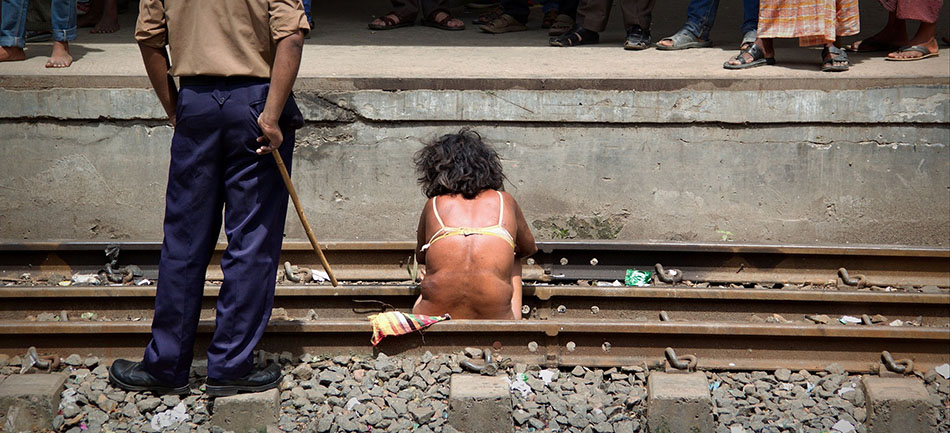
TID:
When you first began, how did it differ from what you planned/expected?
NASIF:
I started this project in 2014. However, the project did not go exactly according to plan, I tried to stick to my plan, but sometimes I had to follow different directions to get the job done. Like talking to them after taking the pictures instead of before or interacting with them in a different way; sometimes things went positively and sometimes it didn’t. Before I began the project I thought I would have to work my way into their lives, but after I began I saw that people were rather friendly and very helpful. Many people tried to make me understand what I should say, and what I shouldn’t, to street people to make them feel more comfortable within my presence.
Before I began the project, my initial plan was to make a series of arranged photos, but as I began to work I realized this was not possible. I could have arranged my scenes but that would not enable me to capture the entire gravity of the situation. There are quite a few photos in this project of small children who are taking drugs, had I arranged my photos it would be impossible to capture such images.
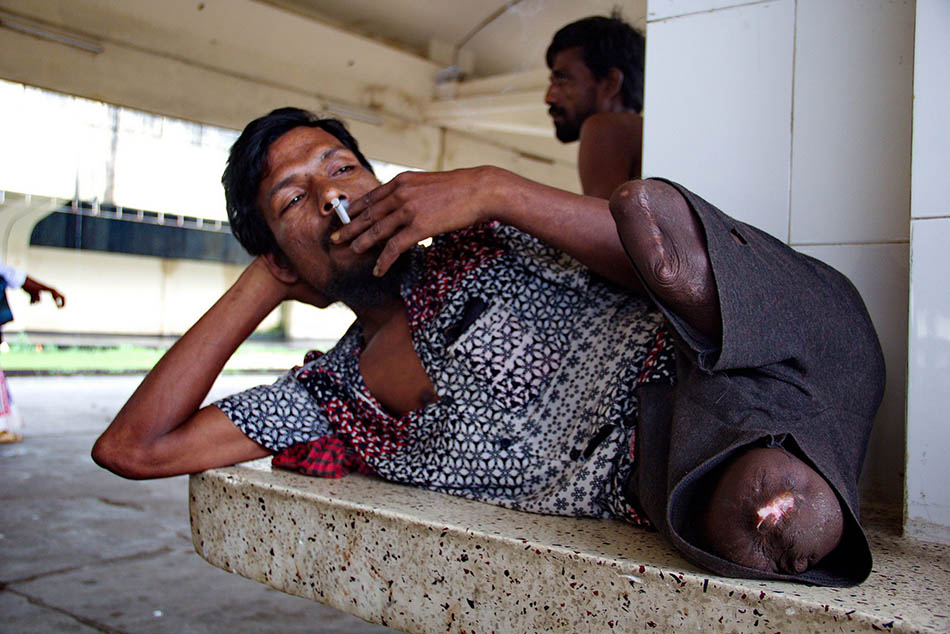
TID:
There are always problems, and I'm curious how photographers work through them. What problems do you face, and how did you overcome these problems?
NASIF:
One of the major risks I face while completing my projects is that there are some risky places where drug addicted people try to mug me and steal my camera, mobile and moneybag to arrange money for buying drugs. The locals come and try to help me in these situations. Sometimes I even talk to the people who try to mug me and hear about their lives and later on they apologize to me.
Another problem is that sometimes people provide wrong information about the subjects I photograph, and as a result, I end up asking them wrong questions. Sometimes I fall into embarrassing situations, but sometimes the subjects are kind enough to clear up the confusions by giving me the right information.
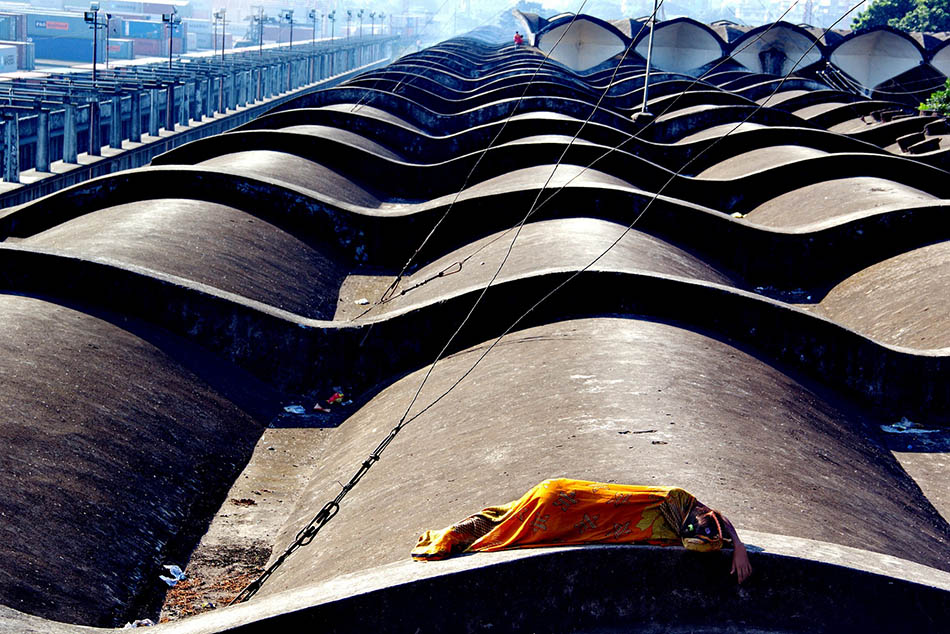
The sex workers in Kamalapur are not very open to photographers and behaved very aggressively when I tried to photograph. It became very diffcult, and therefore I could not document them very closely. I could only capture a few pictures of them. They not only work for sex but also are highly addicted to different kinds of drugs.
TID:
I’m also curious how you worked logistically. Did you work with a fixer, or do you work alone?
NASIF:
I worked alone. I am a Bangladeshi and therefore it is not difficult for me to communicate with them. But, sometimes when I could not communicate exactly what I wanted to say to them, the locals try to help me out by making them understand what I was saying - and that they have nothing to be afraid of. In a project like this, a fixer would have been good, but because it was my own project I did not hire one; moreover, I did not have the budget to pay a fixer. But, I do not face a lot problems due to the absence of a fixer, I rather enjoy working alone.
TID:
By in large, how did people receive your presence?
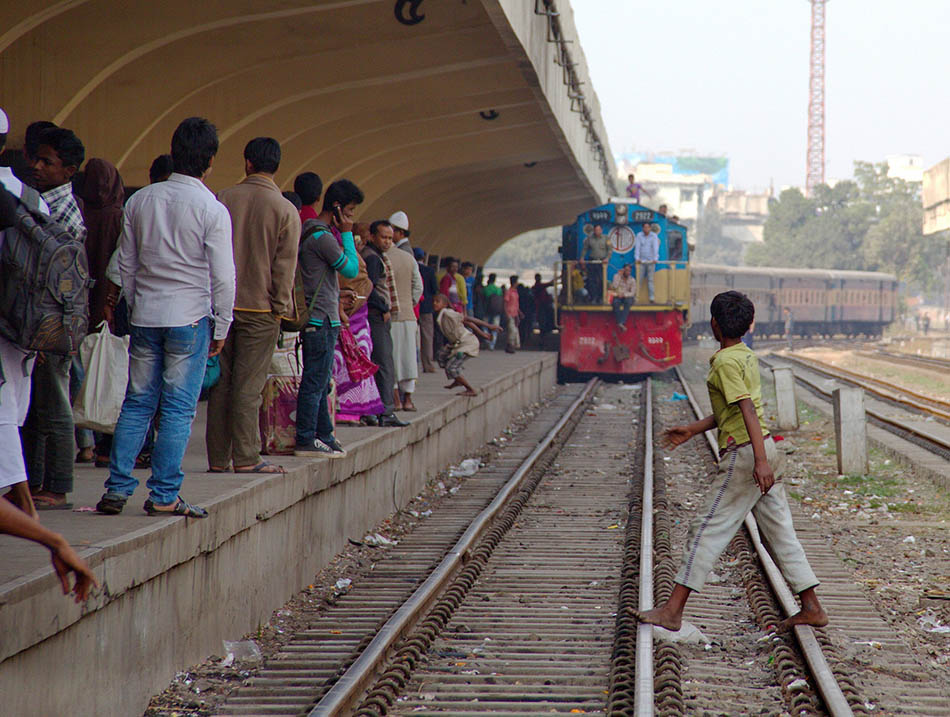
NASIF:
Kamalapur railway station is a very big rail station, in fact it is the biggest in Bangladesh, and sometimes when I go to take pictures, people crowd around me. However, the number is not that much so it does not pose a problem for me. People watched my work with a lot of enthusiasm when I documented the street children and drug abusers over there, listening to what I was saying and watching what I was doing and whispering things among themselves.
Some people were taking pictures of me on their phones as well. On the other hand, in some places there were almost no people at all, especially those areas where the drug users would gather.
TID:
Now, onto the moment. Please walk us through a little more what was going through your mind when you made the lead image.
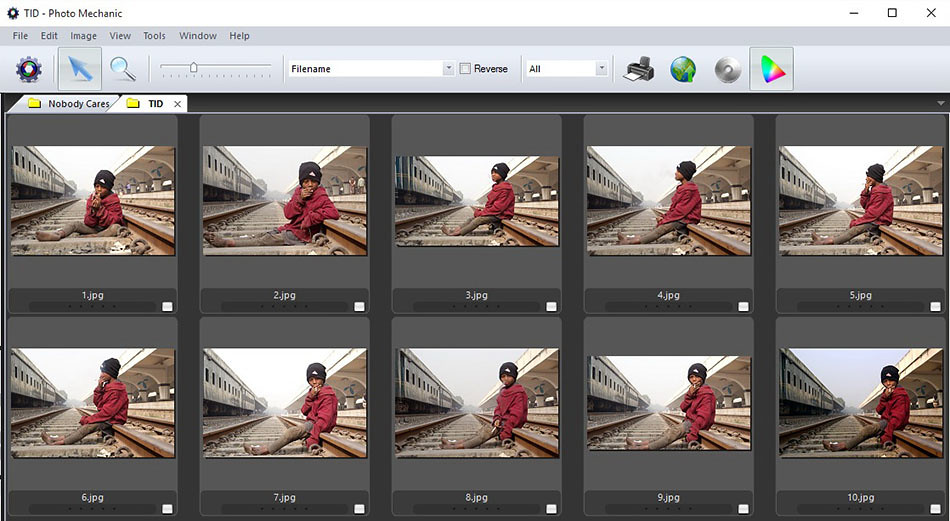
NASIF:
I have to watch my step all the time while taking photos, so I try to stay out of my subjects’ way while photographing, but it still is difficult. I have to keep my cool and control my emotions while taking every single photo, even though I felt terrible to watch these small children taking marijuana inside cigarette paper.
When I talked to them, at first a small child denied that they take drugs, but then they began speaking about their sad lives. Most of them don’t have parents, or any other relatives, and no one cares about whether have food to eat or not; they have to live their lives on their own.
TID:
What did you learn about yourself while working on this project?
NASIF:
From the time I began this project I considered myself lucky, because I have a very privileged life compared to them. I was not born on the roadsides like them, and don’t have to live such tragic lives as them. At the same time it disheartens me to see how they are ignored by society due to their position in society.
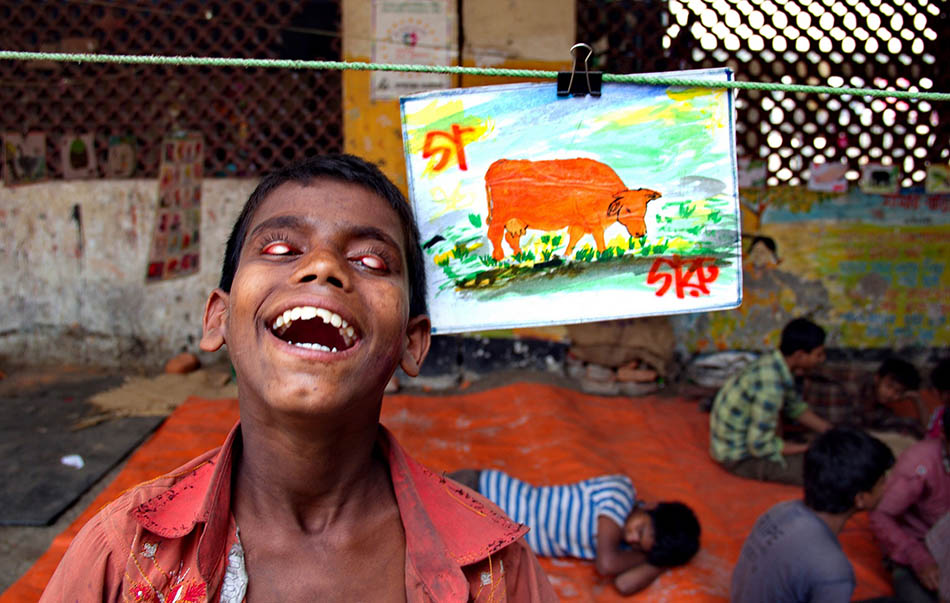
TID:
What did you learn about the people you've documented that you think we should know?
NASIF:
During this project, it became clear that society has deprived them of their basic human rights. Most of them are born on the railway stations, live their lives there, and die, too.
I have a picture in this project where an old man is lying dead at the station; no one really cares about whether they are alive or dead. It's sad, but true, that these are the people who engage in black market drug sales. A lot of well-educated people buy from them, and these people also pull those people toward a life with drugs. Instead of locking them up in prison, the government should send these people to appropriate rehabs, and give them basic jobs at least so that they can move away from such lives.
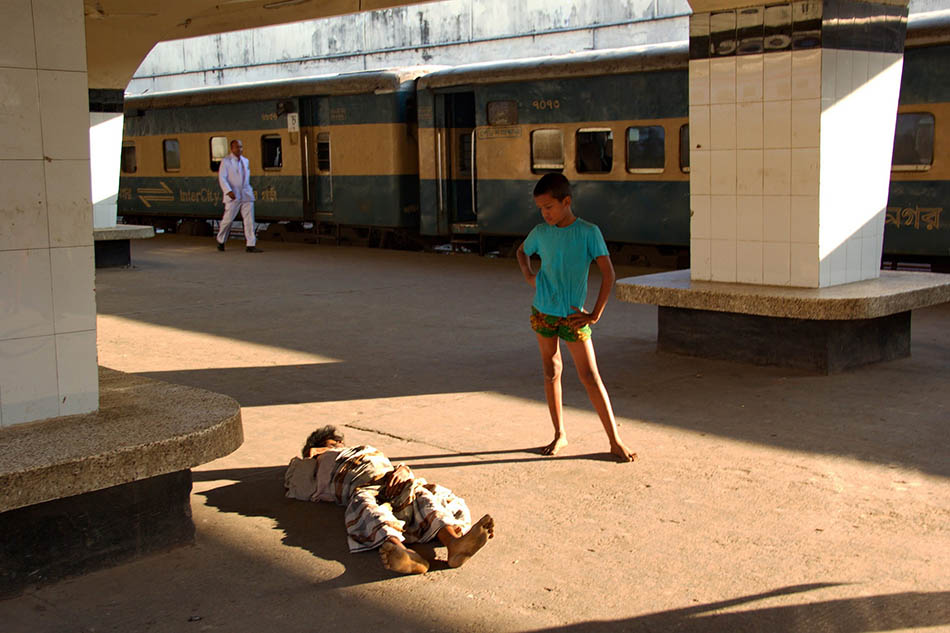
TID:
In conclusion, what advice do you have for photographers wanting to do this type of work?
NASIF:
In my opinion, if any photographer wishes to conduct such projects they have to have a very high degree of patience, have courage and be ready to face the risk associated with it. They have to collect a lot of information beforehand and most importantly they have to be able to mix in with their subjects in a friendly manner so that they can learn about their lives, only then will executing such a project be easily possible.

:::BIO:::

Nasif Imtiaz is a young documentary photographer from Bangladesh. He started photography in 2011. Although he started photography as a street photographer, he now concentrates on documentary photography in his free time, focusesing on aspects such as: human rights in Bangladesh, the underprivileged or deprived society of Bangladesh, those who are denied their basic human rights. Aside from this, Nasif also focuses on varies social issues of Bangladesh. At present, Nasif is completing his undergraduation from North South University in Bangladesh.